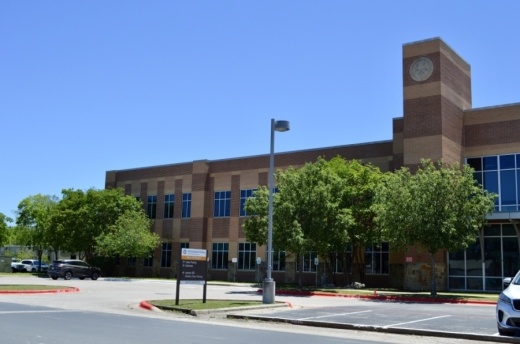The LISD Citizens’ Facility Advisory Committee, meant to provide direction for how the district manages growth, is made up of community members from within LISD boundaries. The LISD board of trustees is expected to use CFAC’s recommendations to determine in its January meetings whether a bond election should be called.
Elementary school recommendations
The CFAC subcommittee for elementary schools offered several recommendations for projects over the next two years that the group determined are critical to students' success, including improvements to HVAC systems and infrastructure.
Elementary subcommittee chair Danielle Ellis said members were give nine pages of potential items for the district to focus on, “and we whittled them down to the things we thought were most important that support our students and that we really were passionate about.”
Modernizing the HVAC systems at Bagdad and Naumann elementary schools, each costing an estimated $21 million, were among the most critical projects determined by the subcommittee. The group also recommended the construction of elementary school No. 31—with an estimated cost of $71 million—to relieve the district’s projections for overcrowding as well as the construction of new roads around elementary school No. 30, which is set to open for the 2024-2025 school year.
New roads for ES No. 30 would require around $14 million in funding. However, Chief Facilities Officer Jimmy Disler said the district could recoup half the cost.
“We’re actually building them as private drives and going to build them to city standards, and then as the developers come in they have to pay half the cost of the roads when they do access them,” he said.
Middle school recommendations
The 22 members making up the middle school subcommittee identified renovations to Running Brushy Middle School’s HVAC system as a critical need. The system is 23 years old and subcommittee chair Rebecca Harrison said it is at significant risk of failing. The project would cost $31.9 million.
Other facility recommendations the subcommittee determined were critical include replacing the heat recovery units at Canyon Ridge Middle School, costing $3 million; expanding outdoor cafeteria space at Stiles Middle School for $505,000; and installing athletic turf at the Canyon Ridge and Running Brushy football fields for $2.3 million.
Harrison said new athletic turf would increase safety for student athletes and represent a cost savings for the district over time.
“In addition, it will address community needs regarding water conservation efforts and provide a more equitable experience for our students,” she said.
High school recommendations
Eight recommendations for upgrades to high school facilities were made to the steering committee.
High school subcommittee chair Shelley Copple said the group would like to see a traffic control system installed at the intersection of Vista Ridge Boulevard and Park Street as well as Park Street and Gupton Way, as several people—including students—have been hit by cars in that area in previous years. The project would cost around $5.9 million.
Members also recommended renovations to the HVAC system at Cedar Park High School for $44.6 million, HVAC renovations at Vista Ridge High School for $69.6 million, safety glass installation on the New Hope High School attendance window for $267,000, roof repairs at Leander High School for $375,000, roof repairs at Cedar Park for $123,000 and the bollard installation to enclose the band practice field at Leander.
Lastly, the high school subcommittee recommended a new campus for LISD’s Skills for Enhancing Lifelong Fulfillment program, which would cost around $22.2 million. The SELF program provides services to young adults, 18-22-years old, to help them transition into community and adult living. The program currently serves 120 students.
“That’s a significant portion of students we’re providing for that don’t have their own facility or building to land in,” Copple said. “That one was unanimous for us, two years in a row.”





